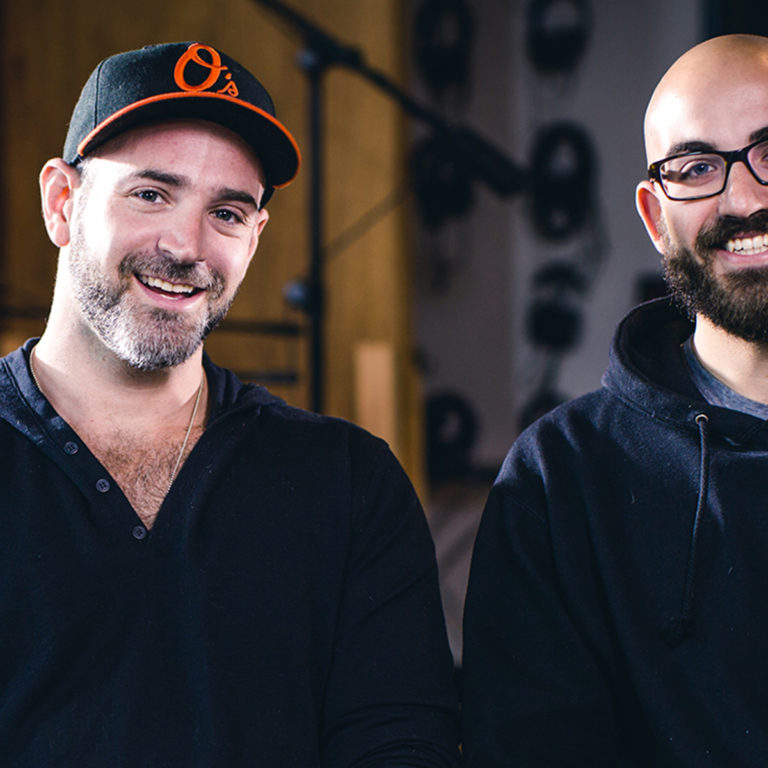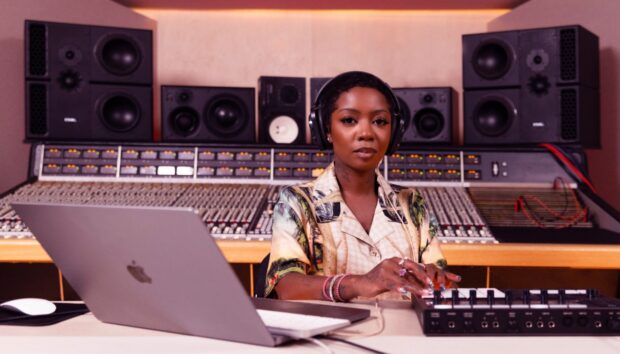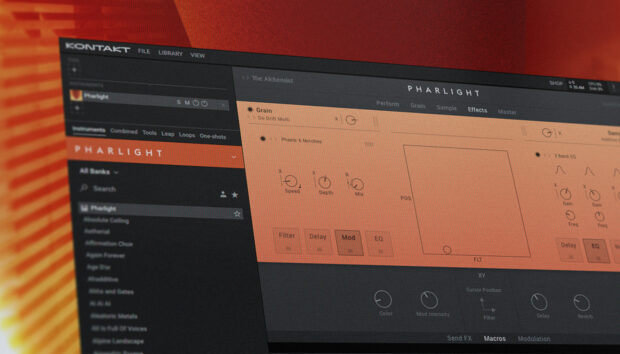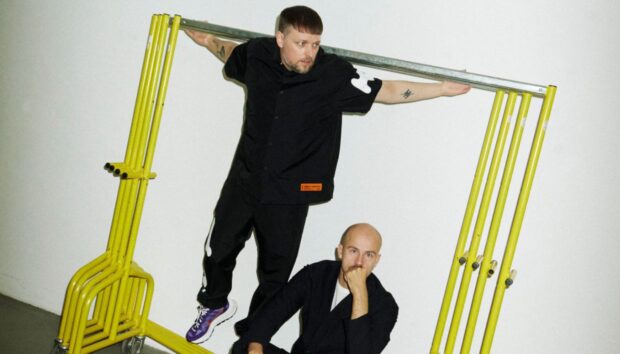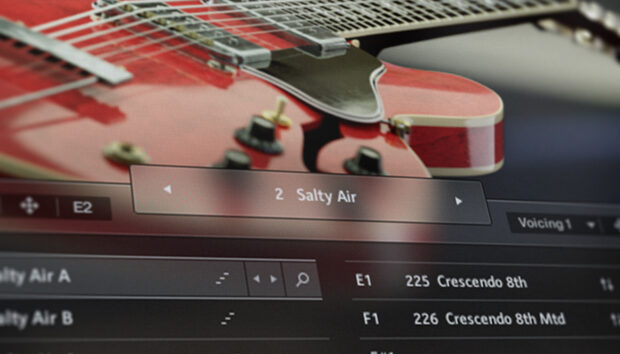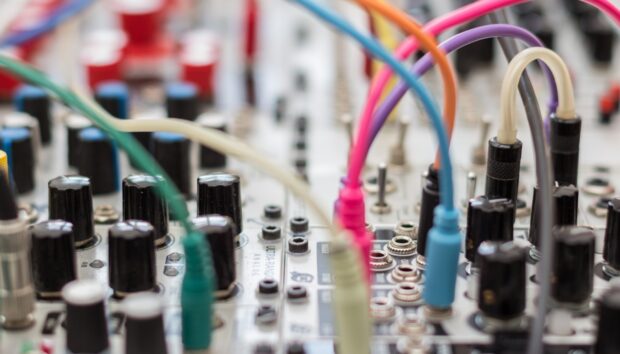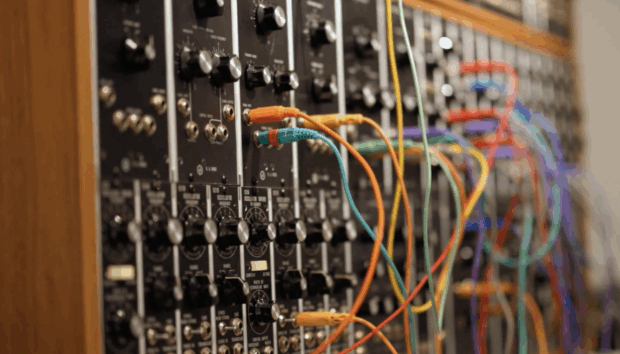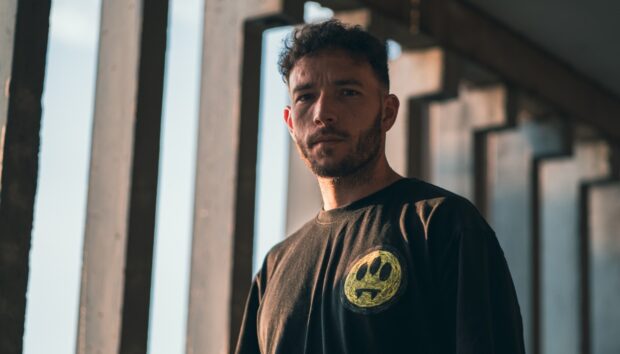Let’s face it, where would we be without our beloved rhythm section? Here at Native we want to shine some light on some of the best basses and drum instruments in the business by bringing together GetGood Drums, Impact Soundworks, and Orange Tree Samples – giving you a selection of their expertedly-recorded bass and drum sounds at a huge discount.
To celebrate, we caught up with Matt Halpern and Adam ‘Nolly’ Getgood, the minds behind GetGood Drums, to find out how they recorded their highly-realistic drums and how you can use their instruments to give your tracks even more bite.
Find out more about GetGood Drums here. You can buy each of these instruments directly from the website.
What led you to found GGD?
Matt: Both Nolly and I have been obsessed with drums for as long as we can remember, and after touring the world together in our band Periphery for many years, we had a lot of experience dialling in drum tones in both live and studio-based scenarios. At the same time we were touring, Nolly was launching his career as a full-fledged music producer and was meticulously working on his skills to create and record the best sounding drums possible. So from tour to tour and from recording session to recording session, we kept honing our methods and our process for recording, and eventually it got to a point where we didn’t want to just do it for ourselves alone anymore – we wanted to bottle up our drum sounds and offer it to others, so they too could have access to our samples. Our goal was clear – we wanted to offer the best possible sounding drum samples for music creators that our abilities would allow us to create.
Could you zoom in a bit on the process of recording the Matt Halpern Signature Pack? What was the biggest challenge?
Matt: Aside from the obvious technical aspects of recording, the hardest parts for us included finding the right studio, deciding exactly which drums we wanted to sample, how many articulations we needed to record from each drum, which tunings to use, deciding on our communication flow in the studio from the live room to control room, learning when to take breaks and how long to make those breaks to keep productivity going… All in all, that first session was a crash course in process development, but it was such a great experience. We learned so much from that session, and we’ve continued to optimize our process for every aspect and every decision of our recording sessions for GGD.
Nolly: On the engineering front, I’d say one of the most challenging aspects during all the sample sessions we’ve done is maintaining the tuning as consistently as possible. Matt uses big sticks and hits really hard, which sounds amazing for what we do but requires that I’m constantly running between the control room and the live room to ensure the drum isn’t dropping in pitch, and that the head hasn’t been dented to death – sometimes we only sample two or three hard hits before the tuning slips and it needs to be tweaked so that the samples sound consistent from one velocity or articulation to the next.
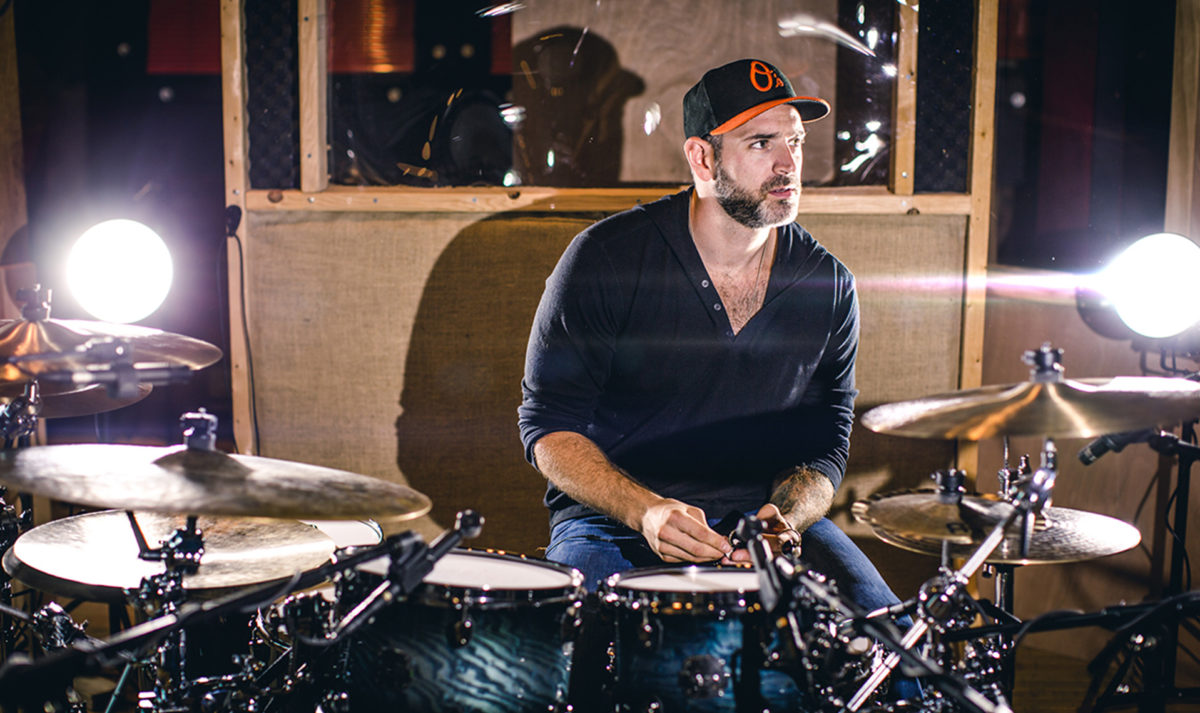
Do you have your own studio for recording?
Nolly: I work from a small mixing and tracking studio room in my home, but I don’t own a large studio facility with a live room to record drums in – as much as I’d love to have an amazing drum studio on hand, I work primarily as a mix engineer so it’d be tough to justify the investment and running costs just to have it sitting empty most of the time. I also appreciate not being tied to one studio, and this way we get to enjoy scouting out the perfect drum room to give us the sound we want from each project and sample library we do.
Your drums sound very realistic, how did you achieve that?
Nolly: Thanks, we’re glad you think so! I think the honest answer is that realism comes about as the result of a sum of many decisions, like, say, the specific tolerance of natural human variation we allow within the sample sets, the sympathetic resonances between kit pieces during tracking, the fact we obsess over the engineering to get the tones at source instead of over-processing them afterwards, and of course, there’s some clever scripting within KONTAKT that takes things even further.
Can you tell us some of your favorite mics for recording?
Nolly: Sure! Firstly, the Shure SM57, Beta 57 and Beta 91As are workhorses that always find their way into my sessions. Next I have a set of Josephson E22s’s that I use on toms – and occasionally the snare – for every single session I’ve done since getting them a few years ago, including all the GGD libraries. They’re just so detailed, they have fantastic presence but a huge low end extension too so they can easily capture the boom of big floor toms.
I also have an AEA R88MKII stereo ribbon that is one of the most foolproof room mics I’ve come across, in a decent room it sounds good more or less anywhere. Normally I place it right in the middle of the room and I’ll use it in XY or Mid-Side depending on the kit setup.
I recently got a STAM Audio SA-47FET that sounds amazing on snare bottom. With a heavy hitter behind the kit, the mic saturates in a way that sounds so aggressive and explosive, it really adds amazing energy and impact. Snare bottom is always a bit of an odd one – on the one hand you can easily throw more or less any robust dynamic or condenser there and it’ll work just fine, especially if you mix it in pretty low, but if you can find the right mic, it can become one of the most exciting elements of the snare sound.
What’s your secret recipe for punchier kicks?
Nolly: I suppose a technique I use when I’m mixing kick drums is to select a digital EQ with good visualiser (FabFilter Pro Q3 is my go-to). I’ll use the visual of the post-EQ curve to inform what I’m hearing as I carve away at the low-end and midrange until the high-end peaks at more or less the same level as the low-end, and there’s not much mid in between. That balance between top and bottom-end means when I then level the track in the mix I just listen to the attack until it’s cutting through as I want, and the low-end naturally finds it place.
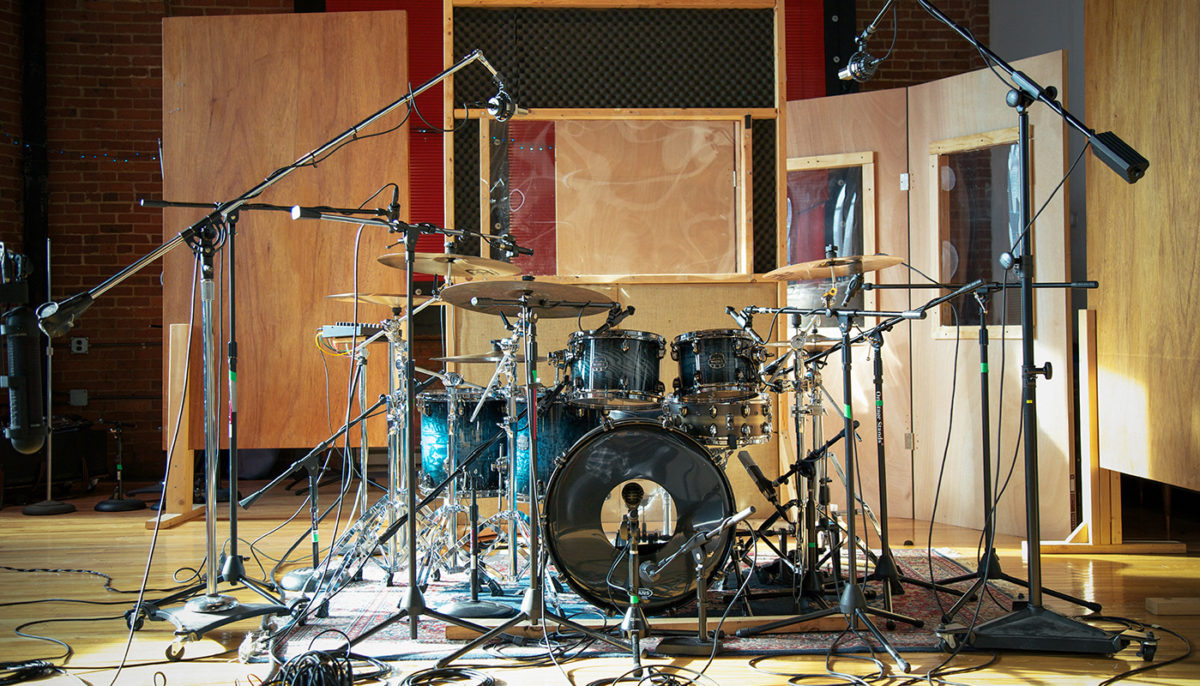
How do you treat your recordings, what kind of compressors do you have?
Nolly: For the GGD libraries, we don’t do a whole lot of processing on the way in, generally just enough EQ to bring out the clarity in the close mics that can get lost when you have a mic at such proximity to the source, and perhaps a bit of outboard compression to exaggerate attack or lengthen the sustain of room mics. You have to be really careful though, because if you compress a room mic track while sampling one hit at a time, the effect when you use the sample library is you’ll have a load of separately compressed samples overlaying each other with no interaction to each other, which is a totally different sound than the whole kit being played simultaneously and compression being applied to everything together.
In terms of actual compressors, in the hardware world I’m a big fan of the classic SSL E desk’s channel compressor for adding impact, and it’s hard to beat a Distressor on room mics. In the box, these days I have to say I’m getting a lot of use out of a compressor we designed and released through GGD called Smash And Grab – its got optimized compression types and timings for each type of drum, overhead or room mic, all based on my favorite sounds, so it’s a no-brainer for me to use it, haha!
If you compare Modern & Massive and Invasion, what are the main differences?
Nolly: In basic terms, Modern & Massive is designed to cater to the rock end of the spectrum with a more open and lively ambience, simple kit setups with oversized drums, and a generally more raucous, brutish sound. Invasion, by contrast, is aimed at metal and prog, so while you’ve still got loads of impact, it’s a more precise and separated kit sound that you can extract maximum detail from, even in dense and fast music. You’ve got a massive kit and cymbal array spanning the whole range of pitches, and generally the drums are a bit smaller in diameter when compared to Modern & Massive, so the sound is a bit more spritely and higher pitched.
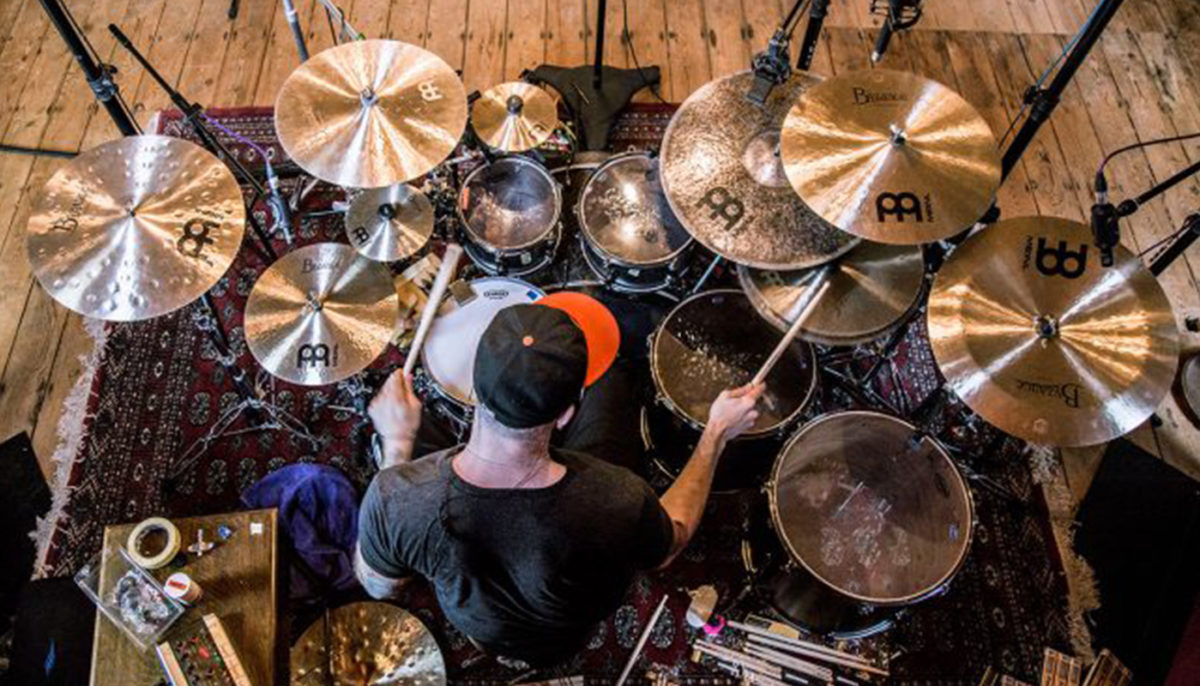
What are some common pitfalls when sampling drum kits?
Matt: I think many of the pitfalls can come from a lack of planning and a lack of communication during the process. We’ve learned that we have to be agile and flexible in the recording process because there are so many different variables at play. Quality control is a huge potential pitfall if you don’t stay on top of every detail, but so are the intangible things like keeping up a good attitude, making sure there’s good communication between whoever is in the control room and whoever is hitting the drums… There’s just so many small details you can’t predict, the more organized and prepared you are with the things you can control, the more bandwidth you’ll have to deal with the unknowns.
How would you recommend producers to use GGD in their productions?
Nolly: Beyond using them for songwriting, demos, and pre-production, I’d recommend that people try them out in their final productions, either in place of live drums, using the shell samples only while using live overheads to capture cymbals, or to create alternative drum sounds for certain sections of a song. One major use I get out of the libraries we’ve made are the room mic samples, especially for the snare drum – you can layer in our room samples on top of a live drum performance to make the snare trail sound bigger but without swamping the drums in ambience as you would if you made the recorded room mic tracks louder. On the more subtle end of things, I’ve done things like dropping in ride cymbal hits from Modern & Massive to supplement a live drum track just to make the bell accents jump out more – it worked a charm!
Which artists have you enjoyed working with the most?
Matt: We have such a great community of people who use GGD. Major producers like The Stereotypes, Zakk Cervini, and Grey, to bands like Veil of Maya, Ice Nine Kills, Arch Echo, Arkentype, and hundreds more – to independent producers like Rabea Massaad, Stephen Taranto, Joe Hamilton, Adam Train, Simen Sandnes, Chris Bedan, Adam Bentley, and thousands more great talents. We’re honored to have such a great pool of engaged customers and users of our products, and it’s always inspiring to see and hear their results.
You can find the GetGood Drums instrument collection here.








